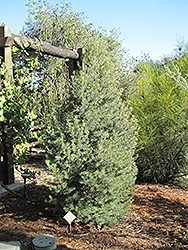Fri & Sat 8am - 8pm
Sun 8am - 7pm
Anytown, USA 12345
fax: 261.787.0463
e-mail: info@successgc.com


Plant Finder

Height: 40 feet
Spread: 15 feet
Sunlight:
![]()
Hardiness Zone: 5b
Other Names: Fourleaf Pinyon Pine, Nut Pine
Description:
A tough yet stately evergreen with a dense, narrow, conical shape and upswept branching; two tone needles produce bushy green branches with a silver sheen; a beautiful, extremely drought tolerant, vigorous tree to position in the landscape
Ornamental Features
Parry Pinyon Pine is primarily valued in the landscape for its rigidly columnar form. It has rich green foliage with white stripes which emerges light green in spring. The glossy needles remain green throughout the winter.
Landscape Attributes
Parry Pinyon Pine is a dense multi-stemmed evergreen tree with a narrowly upright and columnar growth habit. Its relatively fine texture sets it apart from other landscape plants with less refined foliage.
This is a relatively low maintenance tree. When pruning is necessary, it is recommended to only trim back the new growth of the current season, other than to remove any dieback. It is a good choice for attracting birds to your yard. It has no significant negative characteristics.
Parry Pinyon Pine is recommended for the following landscape applications;
- Accent
- Vertical Accent
Planting & Growing
Parry Pinyon Pine will grow to be about 40 feet tall at maturity, with a spread of 15 feet. It has a low canopy with a typical clearance of 1 foot from the ground, and should not be planted underneath power lines. It grows at a slow rate, and under ideal conditions can be expected to live to a ripe old age of 120 years or more; think of this as a heritage tree for future generations!
This tree should only be grown in full sunlight. It prefers dry to average moisture levels with very well-drained soil, and will often die in standing water. It is considered to be drought-tolerant, and thus makes an ideal choice for xeriscaping or the moisture-conserving landscape. It is not particular as to soil type or pH, and is able to handle environmental salt. It is somewhat tolerant of urban pollution. This species is native to parts of North America.
